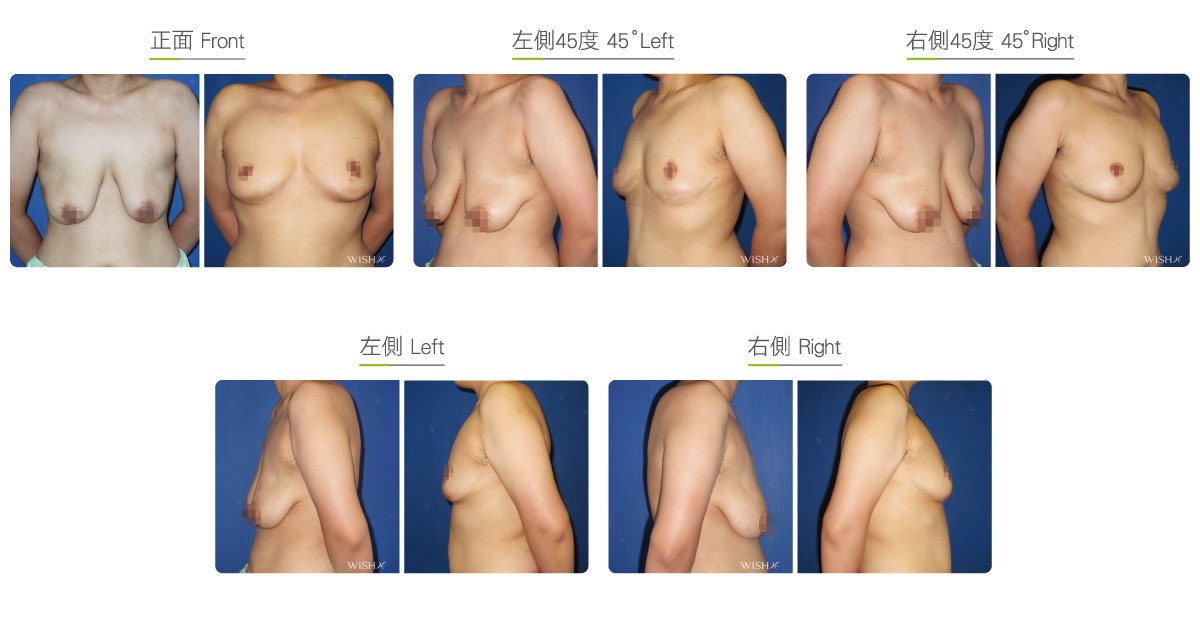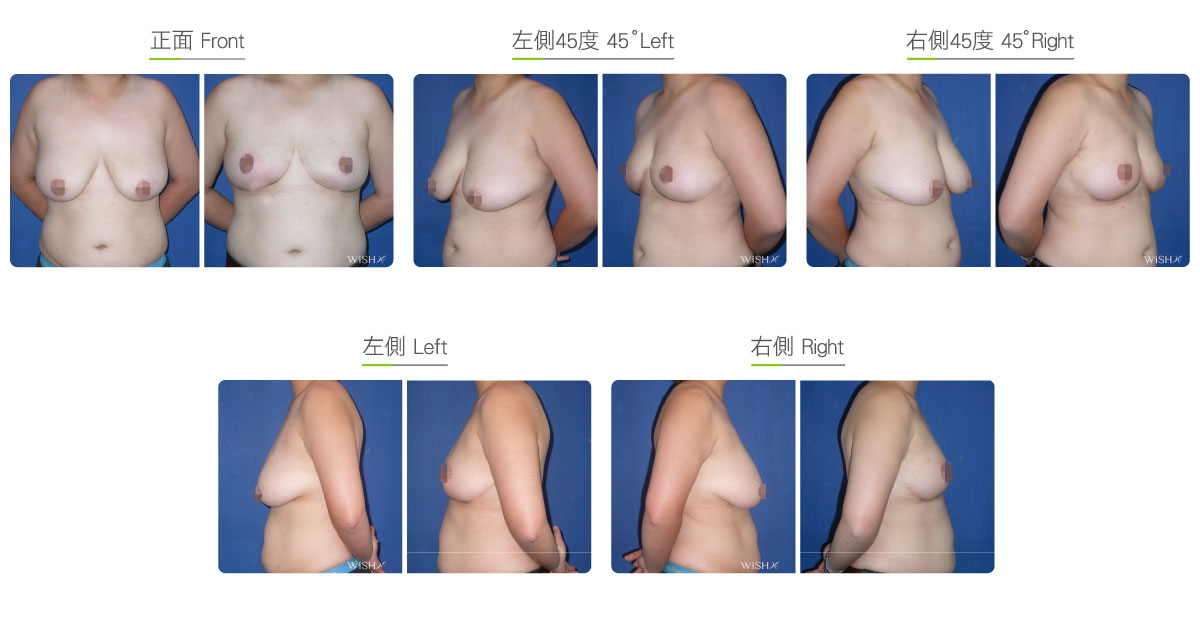Non-vertical Scar Surgery
This is a new developed procedure of “short scar” breast reduction. It is revised from the classic inverted T surgery but eliminates the vertical scar between the areola and inframammary fold. It is ideal for patients with moderate or severer macromastia (E or larger cup size) and ptosis or those prone to hypertrophic scarring. This surgery combines a periareolar incision with a linear inframammary incision for reduction. First, a large portion of the lower half of the breast tissue and skin should be excised; then, the remaining part is lifted up and stitched to the chest wall (mastopexy) at a higher level; lastly, an appropriate elevation and reduction of the areola and nipple position are performed. Therefore, it could confer the effects of both breast reduction and breast lift. This procedure can effectively reduce most of the breast volume, decreasing the burden by 2–3 cup sizes. It can also be applied as transgender breast ablation for the result of a completely flat chest or even pectoral muscle shaping. The resulting shape of the breasts may be wide and flat due to the tight front chest skin, so it might not ideal for patients looking for small and stiff breasts.
This surgery can successfully avoid vertical scars at the center of the breasts associated with a traditional inverted T incision. The scars over the periareolar area and inframammary fold (crescent-shaped line) would require a year or longer to fade.

Surgical conditions
Duration
- Type of anesthesia: General anesthesia
- Type of incision: Periareolar and inframammary crescent-shaped line incisions
- Recovery: Within 5–7 days
- Removal of stitches: 10–14 days
General instructions
No food and water on the day of surgery
- Smoking should be avoided for 1 month preoperatively to prevent its influence on wound healing.
- Excessive exercise and rubbing of the chest should be avoided for 1 month postoperatively.
- Smoking and alcohol consumption are not allowed for 3 months postoperatively to accelerate wound healing.
- Scar care should be continued for 6 months postoperatively.
Ideal candidates
- Those with moderate or severer macromastia or ptosis.
- Those who would like significant reduction in breast size (2–3 cup size reduction).
- Those who would like breast reduction to a completely flat chest (transgender patients).
- Those who are prone to hypertrophic scarring and cannot accept vertical scars associated with inverted T surgery.
Possible complications
- Hypertrophic scarring
- Slow wound healing
- Infection or inflammation
- Breast lumps (temporary)
- Breastfeeding dysfunction
Surgical advantages
-
Avoids vertical scars at the front of the breasts; hides scars near the border between the areola and inframammary fold.
-
Tighter upper breast skin due to the lifting and filling of the mammary gland.
-
Areola reduction can be performed in conjunction.
-
Allows shaping of the pectoral muscle.
-
Nipple sensation less likely to be affected by surgery.
-
Less noticeable postoperative pain.
Surgical drawbacks
-
Temporary lumps in the breast.
-
The breast may appear more wide, flat, and not perky enough.
-
Tight wound closure in the inframammary fold may have complications such as poor healing.
-
Smaller scale of reduction cannot be done.
-
May not be able to breastfeed.



